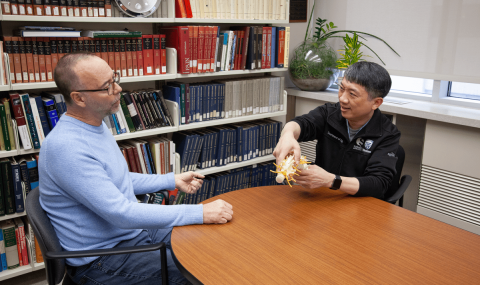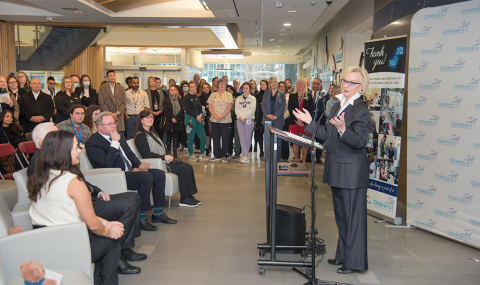The kidneys are located deep on either side of the middle part of the back, tucked up half way under the rib cage. They filter the blood all the time, going through about 180 L per day.
The kidneys remove waste from the blood and concentrate it as urine. The working parts of the kidneys are called nephrons. From the nephrons, the urine travels through the tubules down to the bladder bit by bit as it is made by the kidneys. The tubules take out as much water as possible as the urine goes by and return it to the blood. When the bladder gets full enough, the person will feel the need to urinate.
The kidneys are essential to keeping the right level of water, salts, and acidity in the body. Critical illness often throws off this balance, making it difficult or impossible for the kidneys to do their job. They help maintain blood pressure, manage stress, and start red blood cell production by releasing hormones as needed. The kidneys also assist in processing and excreting medications.
Potential Problems:
The health of the kidneys is put at risk when a person has a severe infection, heart disease, medications that may hurt the kidneys, or previous problems with their kidneys. The kidneys can become overwhelmed by waste or toxic substances or may be harmed by a lack of blood supply.
Below are some problems related to the kidneys and bladder that can happen in the MSICU.
Acute tubular necrosis (ATN)
A common cause of acute renal failure. The tubules are cells that form the tube carrying urine from the kidneys down to the bladder. They are needed to take back water from the newly filtered urine and return it to the blood. If these cells are damaged or die, the body does not get the water it needs back from the kidneys.
The tubules are very sensitive to a lack of oxygen. If a person is in shock, there may not be enough blood getting to the kidneys. Some drugs can harm the tubule cells as well. ATN is reversible by finding out the underlying problem and treating it as soon as possible.
Acute renal failure (ARF)
A rapid onset of kidney failure. There are a number of different causes of ARF. An example is shock, which causes a loss of blood with oxygen going to the organs. Shock can lead to kidney failure among other problems. The loss of kidney filtering of the blood means there are more waste products circulating in the body. This can stop other organs from working properly.
The loss of kidney filtering can also change the balance of water, salts, and acidity in the blood. The treatments are picked based on what is causing the kidney to fail. ARF is potentially reversible, but sometimes one or both kidneys are permanently damaged.
Chronic renal failure (CRF)
A gradual onset of kidney failure. Chronic renal failure is most often associated with high blood pressure, diabetes, kidney infections, or disease. Sometimes it is called End Stage Renal Disease. As with acute renal failure, the treatment will depend on what is causing the problem. Most people with CRF use intermittent dialysis to replace the lost kidney function.
Edema
Edema is a buildup of fluid in the body’s tissues. If the kidneys are not working well, the blood can become overloaded with water. The water will go into the tissues, such as the lungs and under the skin. During a critical illness, a person may have so much edema that they look swollen and distorted. Edema will eventually go away if the underlying cause is found and treated.
Azotemia
A buildup of nitrogen-based waste products in the blood. May be caused by a lack of blood supply to the kidney, or a block in the tubes between the kidney and bladder. Azotemia is diagnosed by blood tests showing a higher level of urea and creatinine. The patient may feel itchy. This is caused by the buildup of these waste products. These chemicals are normally taken out of the blood if the kidneys are working properly. Azotemia can progress to uremia.
Electrolyte imbalances
The kidneys are essential to keeping the electrolytes of the body in balance. Examples include sodium, potassium, calcium, and magnesium. The electrolytes can become imbalanced for a number of reasons, and it is the kidney’s job to keep what the body is running short on and get rid of excess. If the kidneys are not working well, the balance of minerals and the acidity of the blood is affected.
Prevention and Therapies:
Urinary Catheter (Foley)
A urinary catheter can be inserted into the bladder through the urinary opening in order to measure output. This is exactly how much urine the kidneys are producing. The input of fluids from drinking and IVs is measured as well. The output and input are compared, and the therapies are adjusted to the person’s fluid and blood volume needs. It is very common for people in hospital to have a urinary catheter.
Kidney Dialysis
- A dialysis machine is an artificial kidney. Dialysis can be done continuously or intermittently.
- Continuous dialysis removes blood from the body a little bit at a time, filters out the waste products, and then returns it to the body. Continuous dialysis works at a pace similar to the kidneys, so it is less hard on the body.
- Intermittent dialysis is done for a few hours every other day or so. It moves blood in and out of the body at a higher rate. Otherwise, the process is the same. The dialysis machine runs the blood past a filter. Waste and water move from the blood to the dialysis fluid across a membrane. The cleaned blood is then returned to the body.
- Dialysis can be used while the kidneys are recovering from injury, as a permanent replacement for the kidneys, or while a person is waiting for a kidney transplant.
Kidney transplant
If a person has lost most or all of their renal function, they may qualify for a kidney transplant. A kidney can be donated by a living person whose tissue matches up well with the person receiving it. However, it is more common for a kidney to be donated by a person who has died and donated their organs.
Medications:
Many of the medications used to support the kidneys are actually used to change the amount of blood the heart can send to them and the other organs.
Diuretics
Diuretics work on the kidneys by increasing the amount of urine. This allows the body to get rid of extra fluid that can cause edema.
Inotropes, Vasopressors and Vasodilators
- These drugs are mostly used to support the heart and ensure it has a strong beat that moves the blood at the rate the organs need to get enough oxygen and nutrient. In this way they support the kidneys indirectly by ensuring enough blood gets delivered.
- Inotropes are used to increase the strength of the heart’s beat, pushing more blood out with every beat.
- Vasopressors are used to narrow the arteries and increase the blood pressure.
- Vasodilators are used to relax the arteries, slow the flow, and allow a greater volume of blood to pass.
Electrolytes
Sometimes mineral salts that are low can be replaced directly. Other electrolytes can be used to lower a level that is too high by competing with the excess mineral and pushing it into the cells or out into the urine. Electrolytes can also be given to correct the acidity of the blood.
Diagonostic Tests and Monitoring:
Blood tests
- There are a number of blood tests that can provide clues to how the kidneys are functioning.
- Urea and creatinine are nitrogen waste products that are regularly moved from the blood to the urine. These levels can increase if a lot of protein or muscle is being built or broken down, and if the kidneys are not working properly.
- Albumin is the main protein in the blood. The albumin level is important to keeping fluid in the blood vessels and counteracting edema.
- Electrolytes such as sodium (Na+) and potassium (K+) are tested regularly in all patients in intensive care and can give clues to the function of many different body systems.
- The acidity (pH) of the blood and urine can be tested as well to see if a person has a healthy acid-base balance.
Urine samples
Urine can be tested for acidity, concentration, and electrolytes. The presence of bacteria, protein or sugars in the urine can indicate the kidney is damaged or diseased. The concentration of the urine in combination with the intake and output allows staff to calculate how quickly the kidneys are filtering the blood.
Intake and Output (I and O)
All patients in the MSICU have their intake and output of fluid measured and compared at least every twelve hours. Intake includes any drinks, IV fluids, or tube feeds. Output is any fluid drained from any tubes, including urine and blood or fluid from chest tubes.


